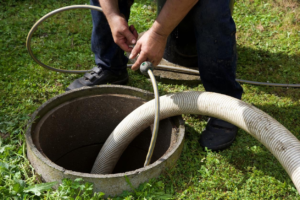Straight teeth are not only attractive but also healthy. They can help prevent gum disease and make cleaning and chew your food easier.
Whether you’re an adult embarrassed by crooked teeth or a self-conscious teen, Invisalign can give you a straight smile without people noticing your braces. But how much does it cost? Click the Invisalign Cost Las Vegas to learn more.

Misaligned and crooked teeth impact your smile, interfere with your speech, and impede your ability to chew food properly. This can lead to nutrient deficiencies, and some patients develop a speech impediment or lisp. Invisalign treatment can fix these issues.
Unlike traditional braces, which can irritate the cheeks and tongue, Invisalign aligners are made of clear plastic that is virtually invisible when worn. This allows you to straighten your smile without feeling self-conscious, even when you’re smiling for pictures or during a presentation at work.
Additionally, the aligners can be removed when you eat or brush your teeth. This makes it easier to maintain proper oral hygiene, which will ultimately help you avoid cavities and gum disease. On the other hand, if you remove your aligners too frequently, they may not be effective.
Invisalign can also correct bite problems that can cause jaw pain or headaches, improve dental cleaning access for better prevention of tooth decay and gum disease, and reduce the risk of grinding your teeth during sleep, which is a common sign of sleep apnea.
Invisalign can even address some bite problems that are too severe to treat with conventional methods, such as veneers. Unlike veneers, which require the removal of some of your natural tooth structure, Invisalign uses SmartTrack attachments that make it easy to straighten the teeth that are currently visible. This can eliminate the need for a full orthodontic procedure. Additionally, it can shorten your overall treatment time because you’ll need to wear the aligners less often.
It’s Comfortable
The clear plastic aligners are shaped to fit your teeth, so they don’t feel like a foreign object in your mouth. In addition, they are less visible than traditional braces. They are so discreet that your friends and colleagues probably won’t even notice them unless you tell them.
While some discomfort is normal when a new set of aligners is put on, this should subside within a few days. Depending on your pain tolerance, over-the-counter pain relievers such as ibuprofen and acetaminophen may help reduce discomfort for the first 12-24 hours when you’re putting on the aligners. Another way to make the process more comfortable is to switch to your new aligners right before you go to sleep, so that you’re not wearing them all day while you’re in school or at work.
Unlike traditional braces, the Invisalign aligners are easily removable. This makes it possible to eat what you want during treatment and brush and floss your teeth as usual. It also helps eliminate the food trapped in brackets that can cause discomfort. You can even brush your teeth with toothpaste designed for sensitive teeth to get rid of any sensitivity you might experience after you start wearing the trays.
Invisalign also requires fewer office visits than traditional braces. You’ll receive a new set of trays every few weeks that are specifically designed to straighten your teeth. You may need to visit the dentist for occasional check-ins, but this is far fewer than the several trips a month required by traditional braces. It’s a much more convenient method that will produce one of the most positive physical changes you can have for your smile.
It’s More Attractive
Invisalign is virtually invisible, making it a great option for adults who don’t want their smiles to be marred by the wires and brackets that are used with traditional braces. The trays are clear, so they blend in with the teeth and are not as noticeable to those around you. They can also be easily removed when brushing and flossing, although it is important to put them back in immediately after to ensure proper oral hygiene.
Having crooked or misaligned teeth can affect more than just your appearance. They can make it difficult to speak clearly and may even cause a speech impediment or lisp. By straightening your teeth with Invisalign, you can improve your speech and have a more confident smile.
Many people avoid getting braces because they don’t want to have to deal with the hassle of wearing them and adjusting to a new diet that has restrictions for the duration of their treatment. With Invisalign, the trays are easily removable so you can eat whatever you like and perform regular oral hygiene without having to negotiate around the wires and brackets with your toothbrush and floss.
While it may take a little longer to get your teeth straightened with Invisalign than with traditional braces, you can still have a beautiful smile by the time they are removed! Invisalign is also more convenient because you don’t have to visit the dentist as frequently, which can save both time and money.
If you’re interested in straightening your crooked or misaligned smile with Invisalign, contact us to schedule a consultation today! We use the iTero digital scanner to eliminate the need for impressions, which means no more gagging and a more comfortable experience.
It’s More Efficient
Unlike traditional braces, which have wires and metal brackets that can get stuck or break during treatment, clear aligners are easily removable. This allows patients to eat and drink anything they want, as long as they remember to put their aligners back in afterward to avoid bacteria buildup along the gumline or on the teeth. It also means that patients can remove the aligners to brush and floss, helping them maintain a clean mouth during treatment.
Invisalign works by using a 3D scan of the patient’s teeth to create a detailed treatment plan and map out the gradual movements that will straighten their smile. Then, a series of custom-made aligners is fabricated in a laboratory using 3D printing technology. You wear each set of aligners for about two weeks, removing them only to eat, drink, clean, and brush your teeth. The result is a beautiful, straight smile.
The best part of Invisalign is that it’s discreet, so you can straighten your smile without worrying about the stigma associated with having braces. This is a big plus for adults who work in professional fields or self-conscious teens, and it can help them feel confident throughout the treatment process.
However, the ability to remove the aligners can also be a disadvantage if you aren’t disciplined enough to wear them for the recommended 22 hours per day. Some patients end up not wearing them for long enough, which can cause the treatment to take longer than it would have if they’d just stuck with traditional braces. This is the main reason why Invisalign isn’t right for everyone. If you’re not a good candidate for Invisalign, then a dentist or orthodontist will be able to evaluate your options and recommend the best course of action.
It’s More Affordable
There are various reasons why people choose Invisalign over other types of orthodontic treatment. Some of these reasons include affordability and convenience. The cost of Invisalign is significantly lower than the cost of traditional braces. Invisalign aligners are also more convenient than traditional braces because you can remove them before meals and brush or floss your teeth without restrictions. Also, you don’t have to worry about foods getting stuck in your aligners like you would with traditional braces.
The amount of time it takes to straighten your teeth with Invisalign depends on the severity of your misalignment. More severe cases of malocclusion require more aligners and longer treatment times. However, if you have mild to moderate malocclusion, you can get your smile straightened in about three to eight months.
Many orthodontists offer monthly payment plans that allow you to pay a small portion of your Invisalign costs each month. This is an excellent way to make your Invisalign treatment more affordable. It is also worth noting that many dental insurances and health savings accounts will cover Invisalign treatments.
When it comes to affordable Invisalign, you should find a dentist who is honest and will provide you with the actual level of complexity of your case. This will help you determine which Invisalign package is best suited for your needs and how much you should be paying for the entire process. This will save you thousands of dollars. Moreover, you can also ask about seasonal discounts or promotional offers on Invisalign from your dentist’s office. Lastly, you can use a healthcare credit card to cover the costs of your Invisalign treatment. These cards are specifically designed to cover medical and dental treatments.




